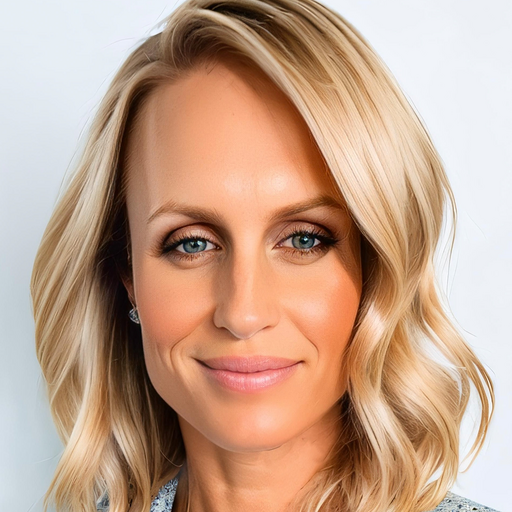Understanding Fitness Business Chargebacks to Help Protect Your Cash Flow


During this sensitive time surrounding the global COVID-19 outbreak, most boutique fitness businesses have been forced to physically close their facilities and face unique financial challenges, especially around cash flow and processing payments.
One of the realities that fitness business owners will likely face in the coming weeks is an uptick in gym chargebacks. Many fitness businesses either don’t pay attention to chargebacks, rarely experience them or simply don’t feel like dealing with the headache. The reality is that chargebacks are basically a double-whammy of revenue walking right out the door. Not only do you lose that money from the paying customer, but you also get hit with chargeback fees on the payment processing side for the dispute even happening.
Below, we’ll go over some details about what a chargeback is, what the dispute process looks like and how you, as a fitness business, can best protect yourself against losing that revenue unnecessarily.
What is a chargeback?
A chargeback is any transaction that has been disputed by your customer for being unauthorized or incorrect. All a customer needs to do to initiate a chargeback dispute is to contact their bank or financial institution and let them know those funds should not have been withdrawn. Usually, customers have 90-120 days from the date of purchase to initiate the dispute.
What are some of the reasons why a customer initiates a chargeback?
Any customer who initiates a dispute will paint the picture of the situation in their own light to the bank or financial institution. However, some of the most common reasons you’ll see as a fitness business are:
- No Credit Issued – The customer requested a refund or return of funds that was never executed; make sure you refund members according to your membership agreement or online terms.
- Non-Receipt– The transaction isn’t recognized because a receipt of payment was not provided to the customer.
- Improper Authorization– The customer denies authorizing the transaction to take place or authorization was completely revoked by the customer to allow the business to continue drafting payments.
- Duplicate Processing– The customer only authorized one transaction but was charged more than once for the same thing.
What happens during the chargeback process?
The lifecycle of a chargeback involves a lot of back-and-forth, which is why the process to fight a dispute can be frustrating, but the first step to solving any problem is to recognize there is one and linearly understand the process. These steps should help paint the picture a bit better:
- The customer will contact their issuing bank or financial institution to reverse the transaction.
- The issuing bank or financial institution investigates based on information provided by the customer, and if they deem the transaction invalid, the issuer overturns the transactionand files a chargeback.
- The funds are withdrawn from the payment processor and transferred back to the customer (conditional refund).
- The payment processor receives all details about the chargeback (date, amount, chargeback reason code) and forwards it onto the merchant (e. your fitness business). This will be in the form of a physical letter to your business addressand, often, an accessible and interactive report in your payment processor’s online portal.
- You review the information and determine whether you want to accept the chargeback or fight the dispute to uphold the original transaction.
- If you choose to fight the chargeback, you must provide the requested documents within the designated timeframe (usually 14 days) to the processor. Depending on the chargeback reason code, evidence that your transaction was legitimate could be in the form of:
- Signed membership contracts with terms of use
- Receipts
- Communication records
- A rebuttal letter explaining the situation
- The processor sends all documents to the issuer, who then decides to rule in favor of the customeror your business.
- If the customer wins, they keep the conditional refund, your business loses the money from the original transaction, and you’ll be charged a chargeback fee.
- If your business wins, the issuing bank reverses the conditional refund and returns the money to the payment processor and, therefore, you. Depending on the processor, you may still be charged a chargeback or dispute fee for the process even taking place.
What if I experience a ton of chargebacks given the whole COVID-19 situation?
Regardless of COVID-19 occurring or not, having too many chargebacks initiated against your business can be damaging. The only change, here, is that processors have a keener eye specifically on fitness businesses right now since most have closed their doors in some way.
Generally speaking, if the ratio of chargebacks you experience in a given month is greater than 1% of your total transactions (whether by transaction count of volume), your business will be deemed a higher risk, which could lead to:
- Delayed funding from the processor
- A funding hold or rolling reserve
- Complete pause in processing
- Account suspension
VISA is the main culprit behind monitoring the chargeback threshold, and they can take aggressive steps to make sure your business gets back on track.
Update: VISA is decreasing the chargeback threshold to 0.9% effective October 1
Card brands aside, the way payment processors underwrite you is all a game of risk. If your business or industry experiences a lot of fraudulent activity, high refund rates or chargebacks, you are deemed higher risk by processors, who need to make sure they financially protect themselves, too. If the processor needs to recover funds from a chargeback dispute from your business, and you don’t have enough money in your merchant bank account, the processor could ultimately be liable for those funds.
How can I prevent chargebacks from happening?
Chargebacks in the business world (and payment processing world) are a lot like Thanos in The Avengers: “inevitable.” But just like Thanos was defeated, so can chargeback disputes (if you needed a *spoiler alert* on that one, what rock have you been living under?). Here are some proactive business practices you can employ to help mitigate the risk entirely:
- Contracts – The best way to ensure the customer is authorizing the transaction is via contracts, specifically membership contracts. In Zen Planner, we have pre-loaded verbiage in our membership signature documents that you can use and customize to fit your busine These documents include some of the most important information: customer name, payment type on file, transaction amount, frequency of the transaction, end date of the membership, and cancelation terms. Ifyou have all of that in place with a signature from the customer, that is the ultimate defense against chargebacks.
- Receipts –After every transaction, it is best practice to print or email a receipt to the customer. You can set this up to automatically happen for recurring membership payments in Setup > Automations by turning on the ‘Payment Receipt – Email” automation under “Billing” or manually send one after a transaction to one or multiple people.
- Communication – Maintaining good business relationship and being flexible and communicative with your customers under all circumstances lessens the likelihood of chargebacks. You’d be surprised how many chargeback disputes stem from soured relationships or scorned, spiteful customers who are just looking to recoupa buck for a service they already rendered. The more proactively and collaboratively you can connect with your customer base from the day they walk into your gym to the day they have a negative experience, the best position you put yourself in to secure recurring revenue and prevent issues like chargebacks.
For daily content updates to help you navigate COVID-19, check out the Rapid Recovery Toolkit.

I’m Coach Kelli, a devoted CrossFit gym owner with 15 years of experience managing my facility, along with owning yoga studios and wellness centers. Beyond the fitness world, I have a passion for cooking, cherish moments with my children and family, and find joy in spending time outside. Having experienced the highs and lows, I’m dedicated to leveraging my expertise to help you grow and succeed on your fitness journey.

I’m Coach Kelli, a devoted CrossFit gym owner with 15 years of experience managing my facility, along with owning yoga studios and wellness centers. Beyond the fitness world, I have a passion for cooking, cherish moments with my children and family, and find joy in spending time outside. Having experienced the highs and lows, I’m dedicated to leveraging my expertise to help you grow and succeed on your fitness journey.




